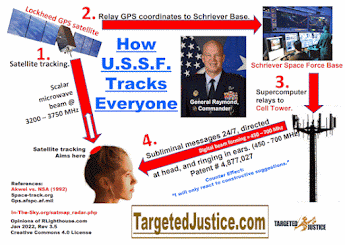Patent No. 6493576 Method and apparatus for measuring stimulus-evoked potentials of the brain
Patent No. 6493576
Method and apparatus for measuring stimulus-evoked potentials of the brain (Dankwart-Eder, Dec 10, 2002)
Abstract
For measurement and display of auditory evoked potentials of the brain, pickup electrodes (A, Ref), an amplifier circuit (1 . . . 5) and an evaluation facility (7) are used to display the time trend of midlatency auditory evoked potentials (MLAEP) and simultaneously therewith, during measurement of the information signals, the time trend of early brain stem auditory evoked potentials (BAEP), which is displayed at a higher time resolution as compared to the information curve. For this purpose an amplifier circuit is used the isolation stage (8) of which is arranged in a way so that the total gain of the amplifier unit (1, 3) connected between electrode assembly (A, Ref) and isolation stage (8) amounts to between approximately 1000 and 4000. A further improvement is achieved by connecting the inputs of the amplifier circuits, which are connected to one pick up electrode (A, Ref) each and to a reference potential (ground) via an input terminating resistor, to a current generator included in an impedance measuring circuit for measuring electrode impedance.
Notes:
DESCRIPTION
This invention pertains to a method
and a test assembly for measurement and display of stimulus-evoked potentials
of the brain, especially for monitoring analgesia and anesthetic depth.
During surgery it has to be assured that the patient will not wake up from general
anesthesia and especially that pains during surgery or other surgical manipulations
will neither be perceived during surgery nor remembered postsurgically by the
patient. The fright caused by an experience like this may result in a so-called
post-traumatic stress syndrome. For this reason, it is of great interest to
measure and display suitable parameters which determine anesthetic depth and
analgesia to enable anesthetists to control anesthesia more precisely than previously
and to reduce patient strain to a minimum. In particular, undesired awakenings
of the patient during anesthesia have to be realized as early as possible.
We know different methods to detect wake stages during general anesthesia. The
most important (1) are the so-called PRST-score, calculated from changes of
blood pressure, heart rate, sweating and tear production, and (2) the isolated
forearm method, during which one of the patient's forearms is isolated against
anesthesia by interrupting the blood flow by means of, for example, a hemomanometer
cuff. To monitor conciousness the patient will then be examined whether he is
able to adhere to simple commands during surgery. Furthermore, an EEG processing
method is known, which evaluates EEG frequency and amplitude changes occurring
during wake and anesthetic stages. However, the PRST score is not always a reliable
method to detect intraoperative wake stages. The isolated forearm method can
only be applied over a short period of time and is consequently not suited to
indicate motor responses of the patient during long-lasting procedures. The
processed EEG and its resulting parameters (median frequency and spectral cut-off
frequency) are not optimally suited for this purpose, too.
Stimulus-evoked EEG signals, such as visually evoked potentials, somato-sensory
evoked potentials and auditory evoked potentials, which will undergo dose-dependent
suppression during general anesthesia, are better suited to fulfill this task.
With midlatency auditory evoked potentials this dose-dependent effect becomes
especially obvious. Auditory evoked potentials consist of a series of positive
and negative voltages generated at different sites along the auditory pathway
which can be picked up by electrodes at the skull. They reflect collection,
transmission and processing of acoustic information from the cochlea via the
brain stem to the cerebral cortex. Early auditory evoked potentials are generated
by structures of the peripheral auditory pathway and the brain stem. They give
evidence of stimulus transduction and primary stimulus transmission. It is known
that early auditory evoked potentials remain almost stable during anesthesia
in contrast to dose-dependent suppressed midlatency auditory evoked potentials.
In general, stimulus evoked potentials are well suited for monitoring anesthetic
depth as well as for recording further neurophysiological functions. Change
of the time course of the measured potentials in comparison to the unchanged
potentials make it possible to draw conclusions for the neurophysiologic function
to be observed. Previously, it has been difficult to apply this method practically.
This was due to the fact that there were no satisfying possibilities for measuring
and evaluating the potentials, especially when the measurement could not be
performed under laboratory conditions but, for example, in the operating room.
Under suboptimal conditions many difficulties may occur. Maybe the staff is
not familiar with recording of evoked potentials or the anesthetist does not
know how to interpret the recorded curves. It needs experienced experts to assess
the results and to operate the equipment mentioned. Furthermore, the electrodes
have to be applied simply and quickly. Other problems may occur by interference
due to specific instruments in the operation room and by signals of other equipment
induced into the electrodes. Besides, attending measures on the patient may
give rise to movement artifacts.
Amplifier circuits, normally used for recording cerebral potentials, may be
a further source of problems. They normally consist of an instrumentation amplifier,
which transfers the incoming signal (typically 0.5 to 10 .mu.V) via a high-pass
filter, a mid-amplifier, a low-pass filter and a post-amplifier to an A/D converter
coupled with an evaluation unit. Patient and analysis unit must be isolated
from each other by, for example, an isolation amplifier, type BF or CF, to prevent
inadmissible currents from passing through the electrodes if external voltages
are applied.
In known circuits, this isolation unit is located either after the first amplifier
stage, i.e. after a gain between 10 and less than 100, or after total gain of
up to 10.sup.6 or after the A/D converter. This results in various disadvantages.
In the first case extremely small signals pass through lines which impose a
capacitive load on the driving amplifier and consequently may give rise to signal
distortion. Furthermore, interference decoupling is limited, even with low driver
impedance. However, if isolation is intended to be introduced after total gain,
decoupling of interference will be good; indeed, the required number of components
does not allow for the desired miniaturization of the circuit. Consequently,
the distances to the recording sites are longer than desired for optimal recording.
Besides, coupling of the output signals into the input circuit can not definitely
be avoided in small sized amplifiers with high gains (from about 5000 onwards).
Gains, as high as those required for measurement of evoked potentials, may cause
a feedback from the amplifier output to its input, either via direct capacitive
coupling or via the supply voltage. This feedback is especially disturbing if
the terminating impedance of the input amplifier is high or asymmetrical. A
feedback loop will change the frequency vs. time behavior of the amplifier system
so that instabilities may occur which may give rise to amplifier oscillations.
This is aggravated by the fact that these effects will often only give rise
to minimal changes of the entire amplified signal, but will have considerable
effect on the portion to be measured, which is "hidden" in the entire signal.
For example, the brainstem auditory evoked potentials (BAEP) having a signal
amplitude of 1 .mu.Vss cannot be recognized in the spontaneous EEG, which has
an amplitude of 20 .mu.Vss to 50 .mu.Vss. The BAEP can best be measured by means
of averaging, provided that the spontaneous portion of the EEG averaged over
time does not correlate with BAEP and that the BAEP portions occur time-synchronous
after the stimulation signal. This cannot be assured, if the time behavior of
the amplifier is subject to change or non-linearities due to intermodulation
distortion occur. The recording signals are distorted or disappear during averaging.
Another side-effect is that common mode rejection deteriorates due to positive
feedback on the input. Furthermore, the system can encounter an unfavorable
operation point for a short period due to common mode interference such as mains
hum, monitor interference and transients. Often these instabilities are hardly
visible in a single signal sweep but show their effects after averaging. The
signal to noise ratio can deteriorate considerably so that the measured signals
can not be analyzed any more.
The invention is intended to avoid the problems mentioned and to provide a method,
and a test assembly, which allow easy, reliable and trouble-free measurement
of neurophysiological signals, so that correct measurements can be performed
which can be reliably assessed and which do not require experienced experts
for operating the instrument being part of the test assembly.
This task is fulfilled by the features states with the patent claims.
According to a further aspect of the invention, the time trend of the evoked
potentials from the brain stem (BAEP) will be displayed with a higher resolution
as compared to the information signals during measurement and display of the
potentials related to the function measured (MLAEP).
It is of special importance, that the reference curve or other curve (i.e. availability
of reference or other curve data) are displayed during the measurement or simultaneously
with the information signals. Just as the information curve, the display is
automatically controlled by the computer integrated in the evaluation unit.
The invention allows for easy and reliable evaluation of the recorded signals,
even under sub-optimal conditions, e.g. during surgery. This is especially useful
for monitoring anesthetic depth. As the curve of the brainstem evoked potentials
does not change during anesthesia and can be evaluated reliably due to a higher
time resolution, it can be taken as a standard for the quality of the recorded
information signals. Deterioration of the reference curve can be assumed to
be due to bad recording conditions.
The evaluation of the signals will be most favorable and informative due to
the fact that according to this invention the evoked stimuli will be repeated
periodically or stochastically and that the actual information curve is displayed
after a predefined time or number of recording periods but has been averaged
over a considerably greater period of time or a considerably higher number of
previous recording periods. In this context it is useful that for averaging
over a predefined number of recording periods the average values of the signals
recorded over a considerably lower number of recording periods will be compared
automatically with each other and will be averaged themselves whereby averages
that differ greatly from the majority of the other averages will be neglected.
By correlating sub-groups, artifacts can be detected more easily and can be
eliminated.
It may be of special advantage, if the time trend of the variation of a characteristic
peak of the midlatency auditory evoked potentials (MLAEP) and/or the latency
of this peak and/or the automatically calculated quotient of these two factors
is displayed.
Furthermore it is useful that the time trend of a variable instrument factor
is calculated by the evaluation unit and displayed simultaneously with the time
trend of the recorded values. This is an additional feature which assures good
quality of the measurement.
For evaluating the evoked potentials the typical amplification should be between
10.sup.5 and 10.sup.6. According to a further aspect of the invention, the total
gain of the amplifier part between the electrodes and the isolating amplifier
is considerably higher than 100 but less than 10.sup.4. The post-amplifier between
the isolation amplifier and the evaluation unit takes over the remaining amplification.
If, for example, the gain prior to the isolation amplifier is between 1000 and
4000, a post-amplification of more than 25, but typically between 100 and 1000,
is required. This allows for the best possible compromise between the highest
achievable common mode rejection (gain as high as possible before isolation
stage) and a minimal coupling into the input (gain as low as possible before
isolation stage). With gains of about 1000, the common mode rejection ratio
can amount to 150 dB.
At the same time, the input and output circuits will be decoupled after 1000
fold gain due to the isolation stage, so that instabilities of the amplifier
will no longer be expected. The output signal with the highest amplitude will
then be decoupled from the supply voltage of the input circuit. At the same
time, the output signal will be treated as a common mode signal by the input
circuit. A further improvement can be achieved if the ground of the output circuit
is connected to earth. This will considerably simplify operation of the test
assembly.
The direct test assembly furthermore provides the advantage that the required
amplifier circuit can be optimally miniaturized without having to cope with
disadvantages such as long leads to the recording sites, signal distortion,
insufficient noise decoupling and noise signals, etc.
Reliability can also be improved with further steps of development by connecting
an impedance circuit for recording electrode impedance to the inputs of the
amplifier circuits which, after having exceeded a limit value and/or after having
reached a certain difference between e.g. the active and the reference electrode,
will generate a warning signal. Wrong electrode impedances which are mainly
due to the contact between electrodes and skull can cause recording errors in
connection with the invention-type amplifier of the invention.
As already mentioned, the invention is not only suitable for determining anesthetic
depth but also for recording any visually evoked potentials. The following description
of the invention is mainly based on measurements of auditory evoked potentials
for monitoring anesthetic depth.




Comments